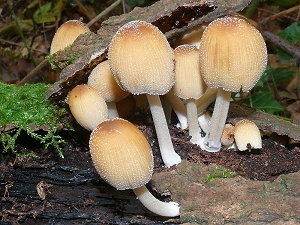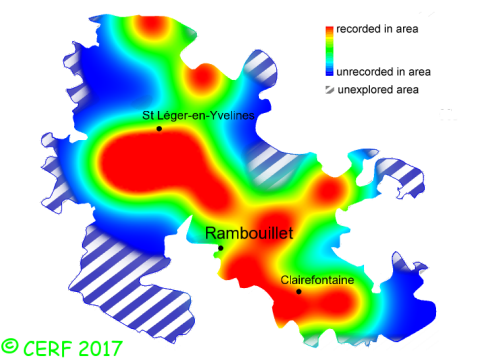| Coprinellus micaceus (Bull.:Fr.) Vilgalys, Hopple & Jacq. Johnson |
|
|
|
|
|
|
The cap is tawny-ochre to yellow-ochre. The cap surface is covered with glistening mica-like velar particles, disappearing with age, not viscid nor sticky. The flesh is unchanging; its taste is faint; the odour is not distinctive; its texture is fibrous. The gills are white then purple brown then black, adnate, crowded . The spore print is black. This species is saprophytic. It grows on broad-leaved stumps or buried wood. The fruiting period takes place from April to March.
Chemical tests : Veil remnants becoming pinkish when in contact with potash (KOH) or ammonia (NH3). Distinctive features : Tawny brown to ochre brown cap, ovate then bell shaped, radially furrowed, with shiny mica-like flakes (especially when young); white stem finely downy, without ring; in dense tufts, on dead wood Coprinellus micaceus is infrequent and scattered in the forest of Rambouillet, and is very frequent, more generally speaking . | ||
|
page updated on 14/01/18

